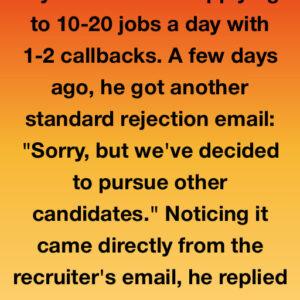The ornate Roosevelt Room buzzed with an unusual energy as cabinet members shuffled through folders and adjusted their seats around the polished mahogany table. Outside, the Washington winter cast long shadows across the White House lawn, but inside, the atmosphere was charged with the kind of anticipation that comes before major announcements. This wasn’t just another routine policy meeting—something bigger was brewing in the corridors of power.
Secretary of Commerce Gina Raimondo glanced at her watch, noting they were already an hour into what had been scheduled as a standard briefing. The agenda had been typical enough: trade policies, infrastructure updates, and regulatory reviews. But anyone familiar with this administration knew that President Trump rarely stuck to scripts, and today would prove no exception.
The meeting had begun with the usual formalities—department heads providing updates on their respective portfolios, discussing implementation of various executive orders, and reviewing upcoming legislative priorities. Treasury Secretary Scott Bessent had outlined the latest economic indicators, while Transportation Secretary Sean Duffy detailed progress on infrastructure projects across the nation. The rhythm was familiar, almost mundane, until the president’s demeanor shifted noticeably.
Those present would later describe a palpable change in the room’s energy when Trump reached into a manila folder beside his chair. His movements were deliberate, calculated—the kind of theatrical preparation that had become his trademark during decades in business and politics. Cabinet members exchanged glances, recognizing the signs of an impending revelation that would likely dominate headlines within hours.
The document he withdrew wasn’t the typical government briefing paper or policy memo that usually circulated in such meetings. Instead, it appeared to be a specially prepared presentation, complete with detailed diagrams and architectural renderings. The quality of the materials suggested this wasn’t a last-minute addition to the agenda, but rather a carefully orchestrated moment designed for maximum impact.
A Tech Titan’s Ambitious Vision
What emerged from that folder would reshape conversations about America’s technological future and its competition with global rivals. The president held up what he described as a gift from one of Silicon Valley’s most influential figures—a comprehensive overview of what could become one of the largest artificial intelligence facilities ever constructed on American soil.
The revelation centered on Meta CEO Mark Zuckerberg’s latest venture: a massive data center complex that would stretch across Louisiana’s landscape like a digital metropolis. The scope of the project was staggering, encompassing an area that Trump claimed covered more than four-fifths of Manhattan’s total landmass. The comparison wasn’t lost on those in the room—Manhattan, the beating heart of American finance and commerce, being dwarfed by a single technology installation in the South.
“This is something given to me by Mark Zuckerberg,” Trump announced, his voice carrying the satisfaction of someone revealing a closely guarded secret. The printout he displayed showed architectural renderings and site plans that illustrated the sheer magnitude of the undertaking. The facility’s footprint stretched across 2,250 acres of Louisiana terrain, a testament to the enormous infrastructure demands of modern artificial intelligence computing.
The president’s enthusiasm was unmistakable as he described the project’s scale. “Actually Mark is building four of them,” he added, suggesting that this Louisiana facility was merely the first of multiple similar installations planned across the United States. The implication was clear: America was making a massive bet on artificial intelligence infrastructure, with private industry leading the charge.
According to Trump’s presentation, the complex would consist of nine separate buildings, each designed to house the sophisticated servers and cooling systems necessary for advanced AI processing. The technical requirements alone painted a picture of unprecedented computational power—the kind of facility that would require its own dedicated power generation to function effectively.
WATCH:





